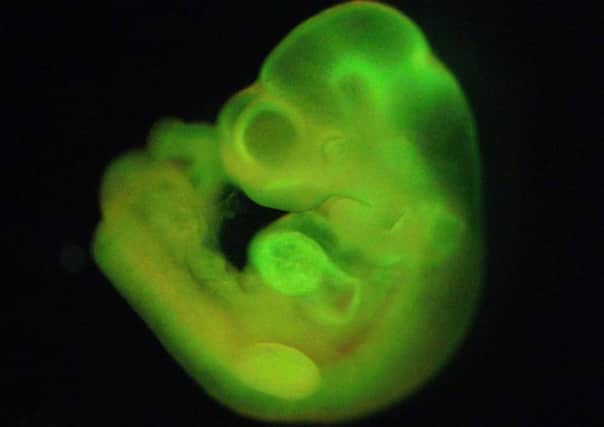Stem cells created with revolutionary technique


Japanese researchers have shown it is possible to reprogramme mice cells into an embryonic-like state simply by altering their environment.
It means, in principle, that cells can have their developmental clock turned back without directly interfering with their genes – something which has never been achieved before.
Advertisement
Hide AdAdvertisement
Hide AdOther experts described the finding as “remarkable” but said it remained to be seen whether human cells would act the same.
The cells become “pluripotent”, having the potential ability to transform themselves into virtually any kind of tissue in the body, from brain to bone.
Reprogramming a patient’s own cells in this way is seen as the Holy Grail of regenerative medicine, raising the prospect of repairing diseased and damaged organs with new healthy tissue that will not be rejected by the immune system.
Current methods of performing the same trick involve genetic manipulation, which carries with it a serious risk of triggering cancer. But the new method, described in the journal Nature, requires no genetic tweaking.
Scientists simply bathed immature white blood cells from mice in an acidic solution for 25 minutes.
The researchers from the Riken Centre for Developmental Biology in Kobe, Japan, named their creations “Stap” (stimulus-triggered acquisition of pluripotency) cells.
Dr Dusko Ilic, a reader in stem cell science at King’s College London, said: “The approach is indeed revolutionary. It will make a fundamental change in how scientists perceive the interplay of environment and genome.”
His colleague Professor Chris Mason, chair of regenerative medicine bioprocessing at University College London, said: “If it works in man, this could be the game-changer that ultimately makes a wide range of cell therapies available using the patient’s own cells as starting material. The age of personalised medicine would have finally arrived. Who would have thought that to reprogramme adult cells to an embryonic stem cell-like [pluripotent] state just required a small amount of acid for less than half an hour – an incredible discovery.”
Advertisement
Hide AdAdvertisement
Hide AdAlthough pluripotent embryonic stem (ES) cells can be “mined” from discarded early-stage human embryos, the practice is controversial. Much attention has focused on an alternative solution, creating so-called induced pluripotent stem (iPS) cells by reprogramming the genes of adult cells.
However, iPS cells, made by injecting a cell with foreign genes tend to trigger uncontrolled tumour growth.
Stap cells could potentially lift this barrier to using stem cells in medicine, though scientists are still a long way from conducting such experiments.
Dr Ilic added: “The papers describe a major scientific discovery and they will be opening a new era in stem cell biology. Whether human cells would respond in a similar way to comparable environmental clues remains to be shown. I am sure the group is working on this and I would not be surprised if they succeed even within this year.”